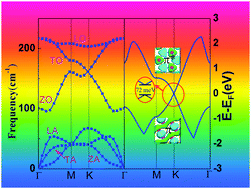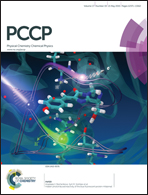Tinene: a two-dimensional Dirac material with a 72 meV band gap
Abstract
Dirac materials have attracted great interest for both fundamental research and electronic devices due to their unique band structures, but the usual near zero bandgap of graphene results in a poor on–off ratio in the corresponding transistors. Here, we report on tinene, monolayer gray tin, as a new two-dimensional material with both Dirac characteristics and a remarkable 72 meV bandgap based on density functional theory calculations. Compared with silicene and germanene, tinene has a similar hexagonal honeycomb monolayer structure, but it has an obviously larger buckling height (∼0.70 Å). Interestingly, such a moderate buckling structure results in phonon dispersion without appreciable imaginary modes, indicating the strong dynamic stability of tinene. Significantly, a distinct transformation is discovered from the band structure that six Dirac cones would appear at high symmetry K points in the first Brillouin zone when gray tin is thinned from the bulk to monolayer, but a bandgap as large as 72 meV is still preserved. Considering the recent successful realization of silicene and germanene with a similar structure, the predicted stable tinene with Dirac characteristics and a suitable bandgap is a possibility for the “more than Moore” materials and devices.


 Please wait while we load your content...
Please wait while we load your content...